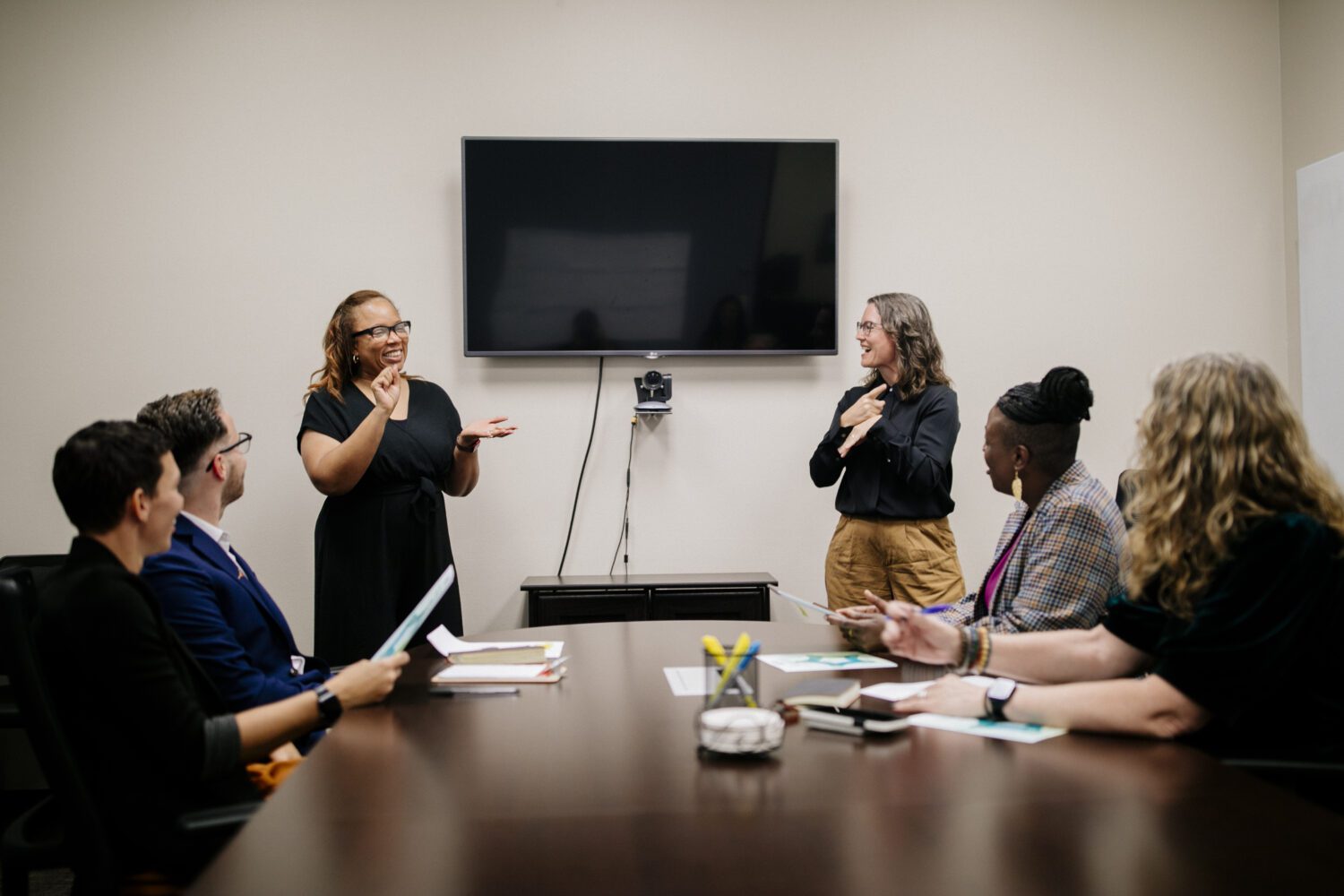NDC’s work with colleges and training programs across the country is unveiling an alarming trend. Disability services professionals in postsecondary environments are sharing that the national shortage of American Sign Language interpreters has been especially challenging. Colleges and universities across the country are facing increased difficulties providing support services to deaf students. This difficulty is a result of both a lack of availability of qualified interpreters and a decreased willingness of available interpreters to work in postsecondary settings, particularly in person.
Crisis for Deaf College Students
Analysts suggest that the number of long covid cases, the availability of remote work, and general dissatisfaction with working conditions and compensation are contributing to a nationwide staffing shortage. We believe these current challenges are also contributing to the interpreter shortage. However, we also know that the need for interpreters who have specialized skill and knowledge has increased over the years as more and more deaf students pursue medical and technical fields.
Interpreters have told us that they are choosing not to continue working in postsecondary settings for following reasons:
- Poor compensation
- Inconsistent scheduling
- Working alone without a team
- Long commutes and difficult parking options
- Lack of technological support during remote interpreting work
On the other hand, interpreters have also told us that they value the challenging nature of the work in postsecondary settings and playing a role in the educational journey of deaf students.
Shift in Support Services
As disability services professionals work to minimize service gaps, patterns begin to emerge and the larger picture of the impacts of this shortage comes into focus. Not only is there a large shift in the workforce that supplies interpreting and speech-to-text services on campuses nationwide, but also a shift in how these services are delivered. Fewer service providers are willing to work on-campus, leading to a transition to remote services for many deaf students.
Colleges and universities are experiencing a range of issues and are undertaking a variety of approaches in order to tackle this shortage and continue to provide services to students. In support of professional growth, and as a way of retaining interpreters within their institution, several colleges and universities provide professional development and mentoring opportunities.
In one college district, access to VRI has been expanded to account for a fewer number of on-campus interpreters by upgrading internet bandwidth, adding wireless access points, and increasing deployments of mobile hotspots. Other campuses are utilizing shared contracts with other institutions, providing staff interpreters with a dynamic experience while continuing to fulfill the needs of students. Another college is expanding their geographic reach in an effort to connect with a larger pool of interpreters. Paying for travel expenses and flexibility with scheduling are just two facets of the creative problem-solving process that many disability services offices now find themselves managing.
Strategies to Recruit and Retain Interpreters
To combat the shortage, many DS professionals are sharing strategies to not only hire qualified interpreters and speech-to-text providers, but also to retain them. NDC has compiled a list of recommendations that may prove useful as you work through this shortage:
- Listen, validate, and support the interpreters and their work
- Use a combination of agency and hourly service providers
- Consider hiring staff interpreters and providing guaranteed hours
- Provide VRI services on demand
- Provide parking or transportation support for interpreters who come to campus
- Provide and pay for preparation time
- For lecture-based classes, consider teaming onsite interpreters and remote interpreters
- Consider employing hourly student workers to help setup microphones and provide audio support to remote interpreters and speech-to-text providers
- Provide a dedicated office space for interpreters to take remote assignments between classes or before/after their time in on-campus classes
- Consider collaborative opportunities to share staff interpreting contracts with other institutions
- Offer free workshops with CEUs
Connecting, Adapting & Collaborating
In response to the effects of the interpreter shortage, NDC is focused on creating an opportunity for disability services professionals to connect with us and one another. We invite you to join us on February 16, 2023 at 1pm CT for Exploring Interpreter Shortages in Postsecondary Settings We at NDC want to know more. Register now to join this conversation: PSinterpretershortage This work cannot be done without full institutional support, and we encourage college and university administration to participate in these sessions.









